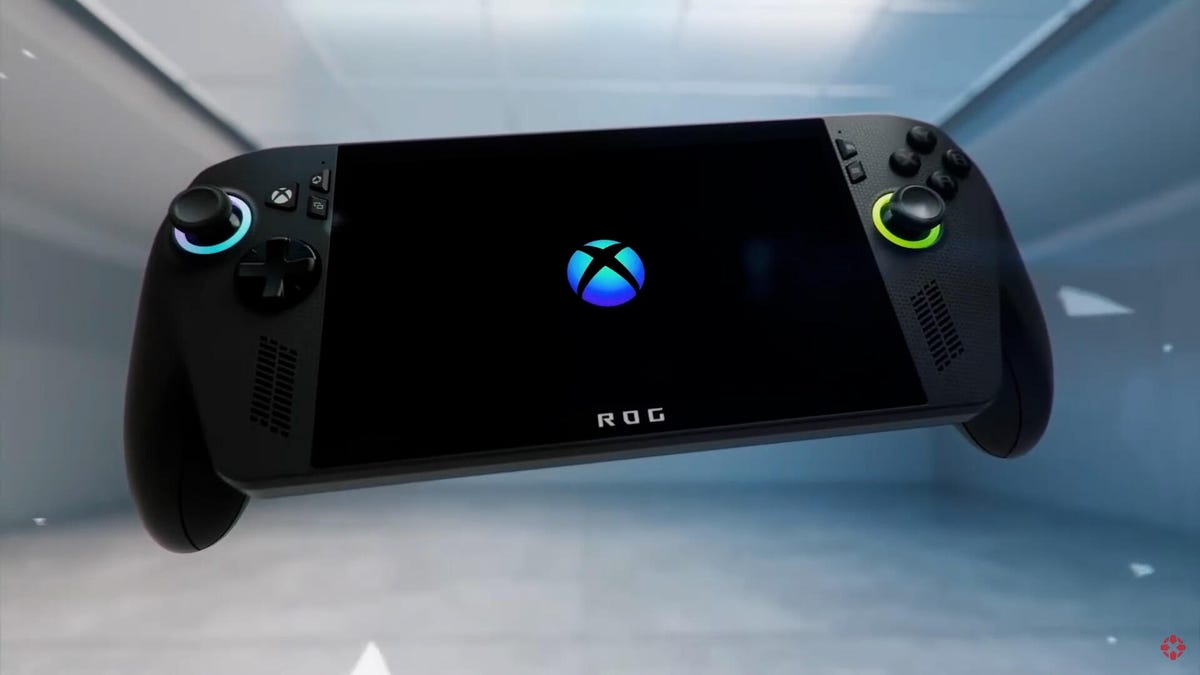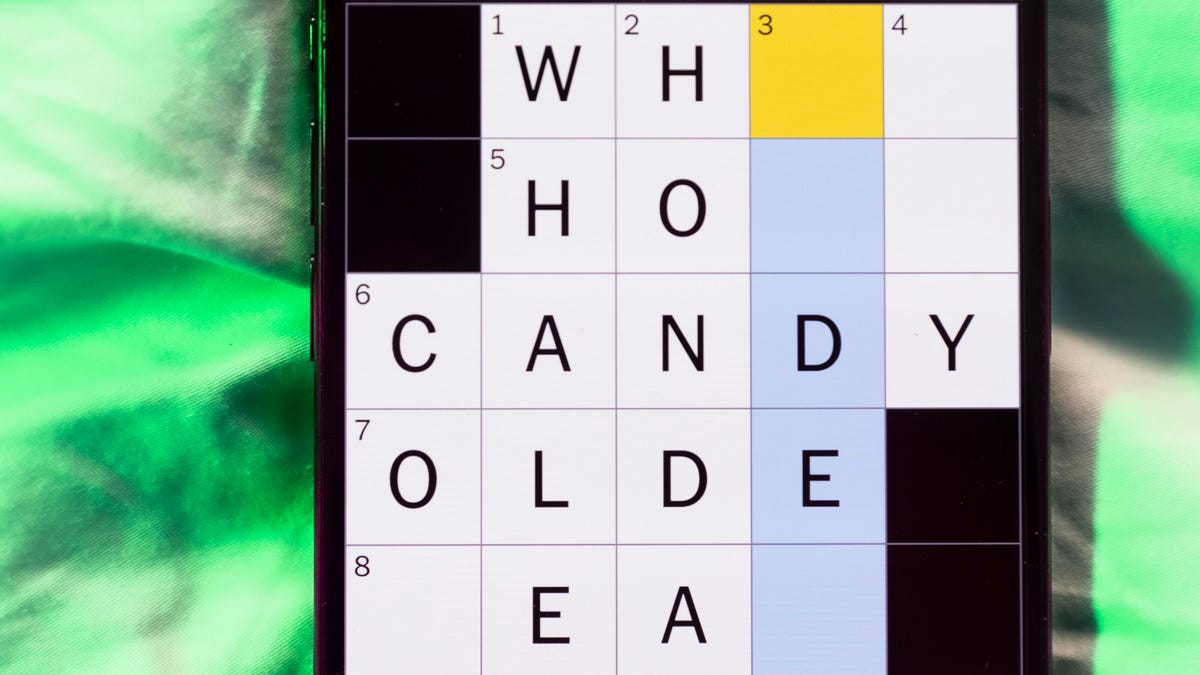Technologies
ROG Xbox Ally: Specs, Price Leaks and How It Compares to Steam Deck
Can Microsoft and Asus stop Valve?

The Steam Deck has yet to find a real competitor in the PC handheld gaming device battle. Other hardware companies, including Asus, Lenovo and MSI have tried, but so far, their devices keep falling short. Asus plans to try to take another swipe at the crown, though, this time with the help of Microsoft.
In June, the two revealed their partnership for a new handheld device: the ROG Xbox Ally. This handheld will come in two variants and will attempt to bring the Xbox console experience to a portable device.
Will this be enough to outdo the Steam Deck or will the Xbox Ally just be another wannabe?
How much will the Xbox Ally cost?
Neither Microsoft nor Asus has confirmed an official price yet. One thing for sure is that the Xbox Ally won’t be cheap.
Multiple leaks suggest the price will be 599 euros for the Xbox Ally and 899 euros for a higher-end version, the Xbox Ally X. That does leave the question of what the price will be in the US. Most likely, the price will be the same just in dollars, as that is the typical practice for gaming hardware prices.
One uncertainty is whether the price will be adjusted before launch because of tariffs. Microsoft recently increased the prices of its Xbox Series consoles and Asus has done the same with its laptops and its current ROG Ally lineup.
When does the Xbox Ally come out?
Like with the price, Microsoft and Asus have yet to confirm an actual release date. However, the same leak that mentioned a possible price also leaked a day when the handheld device will come out.
According to Dealabs, the Xbox Ally release date might be Oct. 16. This timing gives Asus a chance to make the device widely available in time for the holidays and Black Friday sales.
What’s the difference between the Xbox Ally and Xbox Ally X?
There are two versions of the Xbox Ally: the lower-priced Xbox Ally and the higher-priced Xbox Ally X.
The key differences between the two are in their processors, storage and memory. The Xbox Ally will have the AMD Ryzen Z2 A Processor, while the Xbox Ally X will use the faster AMD Ryzen AI Z2 Extreme Processor. Memory will be different, with the lower-priced Xbox Ally having 16GB of LPDDR5X-6400 and the higher-cost handheld coming with 24GB LPDDR5X-8000. Both will come with SSD storage but the Xbox Ally will have 512GB and the Xbox Ally X will have 1TB. The Xbox Ally X will also come with a bigger battery but with a faster processor and more memory. It’s not clear if that difference in capacity translates to a longer battery life.
Specs for Xbox Ally/Xbox Ally X
| ROG Xbox Ally | ROG Xbox Ally X | |
| Operating System | Windows 11 Home | Windows 11 Home |
| Controls and grip | Contoured grips inspired by Xbox Wireless Controllers deliver all-day comfort. ABXY buttons / D-pad / L & R Hall Effect analog triggers / L & R bumpers / Xbox button / View button / Menu button / Command Center button / Library button / 2x assignable back buttons / 2x full-size analog sticks / HD haptics / 6-Axis IMU | Contoured grips inspired by Xbox Wireless Controllers deliver all-day comfort, complete with impulse triggers for enhanced control.ABXY buttons / D-pad / L & R impulse triggers / L & R bumpers / Xbox button / View button / Menu button / Command Center button / Library button / 2x assignable back buttons / 2x full-size analog sticks / HD haptics / 6-Axis IMU |
| Processor | AMD Ryzen Z2 A Processor | AMD Ryzen AI Z2 Extreme Processor |
| Memory | 16GB LPDDR5X-6400 | 24GB LPDDR5X-8000 |
| Storage | 512GB M.2 2280 SSD for easier upgrade | 1TB M.2 2280 SSD for easier upgrade |
| Display | 7-inchFHD (1080p) IPS, 500 nits, 16:9; 120Hz refresh rate, FreeSync Premium;Corning Gorilla Glass Victus + DXC Anti-Reflection | 7-inch FHD (1080p) IPS, 500 nits, 16:9; 120Hz refresh rate, FreeSync Premium;Corning Gorilla Glass Victus + DXC Anti-Reflection |
| I/O Ports | 2x USB-C (2 x DP 2.1, PD 3.0), 1 x micro SD, 1 x analog audio | 2x USB-C (1 x USB4, 1 x USB 3.2 both w/ DP 2.1, PD 3.0), 1 x micro SD, 1 x analog audio |
| Network and Communication | Wi-Fi 6E (2 x 2), Bluetooth 5.4 | Wi-Fi 6E (2 x 2), Bluetooth 5.4 |
| Dimensions | 29.1×12.2×5.1 cm | 29.1×12.2×5.1 cm |
| Weight | 670g | 715g |
| Battery | 60Wh | 80Wh |
| Included | ROG Xbox Ally 65W charger Stand | ROG Xbox Ally X 65W charger Stand |
What makes the Xbox Ally different from the Steam Deck?
The most notable difference between the Xbox Ally and the Steam Deck is the operating system. Like the ROG Ally, the Xbox Ally will also use Windows 11, while the Steam Deck uses Valve’s SteamOS.
Even though every PC game works with Windows, handheld gaming devices running Windows have had serious issues, as the OS implementation has been a bit buggy. Portable consoles like the ROG Ally, MSI Claw and Lenovo Legion Go simply don’t run well with full Windows because the OS is designed for laptops and desktops and not handheld devices. SteamOS, however, is designed to run almost every game on Steam without issues and regardless of device size.
The Xbox Ally changes that by giving it an Xbox interface. This would be similar to how the Xbox app on PCs works for running games. It would also be able to download Xbox games directly to it, remote play them off a console or stream them via Xbox Cloud.
Another big difference is the hardware. The Steam Deck came out in 2022 and it was the first mass-produced handheld gaming device for PC. At the time, Valve had to use custom AMD processors but since then, AMD has produced more processors for handheld devices, which are now much more powerful in just a few years. The Xbox Ally would also have faster RAM. Both the improvement in processors and RAM should significantly increase the number of games the Xbox Ally can run versus the Steam Deck, which is already struggling to run newer games at 30fps.
Externally, the Xbox Ally will come with the same size 7-inch display but it will have a higher refresh rate of 120Hz, a brighter screen at 500 nits and increased resolution at 1080p. There will also be some slight differences in the physical size of the Xbox Ally, which will be a little bigger and heavier. Another difference from the Steam Deck is that the Xbox Ally controls will be more similar to the Xbox controller.
Microsoft and Asus have a large hill to climb if they plan to have the Xbox Ally dethrone the Steam Deck. It will be especially tough if Valve decides to announce the Steam Deck 2 soon.
Technologies
Today’s NYT Connections Hints, Answers and Help for Dec. 24, #927
Here are some hints and the answers for the NYT Connections puzzle for Dec. 24 #927

Looking for the most recent Connections answers? Click here for today’s Connections hints, as well as our daily answers and hints for The New York Times Mini Crossword, Wordle, Connections: Sports Edition and Strands puzzles.
Today’s NYT Connections puzzle is kind of tough. Ooh, that purple category! Once again, you’ll need to look inside words for hidden words. Read on for clues and today’s Connections answers.
The Times has a Connections Bot, like the one for Wordle. Go there after you play to receive a numeric score and to have the program analyze your answers. Players who are registered with the Times Games section can now nerd out by following their progress, including the number of puzzles completed, win rate, number of times they nabbed a perfect score and their win streak.
Read more: Hints, Tips and Strategies to Help You Win at NYT Connections Every Time
Hints for today’s Connections groups
Here are four hints for the groupings in today’s Connections puzzle, ranked from the easiest yellow group to the tough (and sometimes bizarre) purple group.
Yellow group hint: Cash out.
Green group hint: Chomp
Blue group hint: Walleye and salmon.
Purple group hint: Make a musical sound, with a twist.
Answers for today’s Connections groups
Yellow group: Slang for money.
Green group: Masticate.
Blue group: Fish.
Purple group: Ways to vocalize musically plus a letter.
Read more: Wordle Cheat Sheet: Here Are the Most Popular Letters Used in English Words
What are today’s Connections answers?
The yellow words in today’s Connections
The theme is slang for money. The four answers are bacon, bread, cheese and paper.
The green words in today’s Connections
The theme is masticate. The four answers are bite, champ, chew and munch.
The blue words in today’s Connections
The theme is fish. The four answers are char, pollock, sole and tang.
The purple words in today’s Connections
The theme is ways to vocalize musically plus a letter. The four answers are hump (hum), rapt (rap), singe (sing) and whistler (whistle).
Don’t miss any of our unbiased tech content and lab-based reviews. Add CNET as a preferred Google source.
Toughest Connections puzzles
We’ve made a note of some of the toughest Connections puzzles so far. Maybe they’ll help you see patterns in future puzzles.
#5: Included «things you can set,» such as mood, record, table and volleyball.
#4: Included «one in a dozen,» such as egg, juror, month and rose.
#3: Included «streets on screen,» such as Elm, Fear, Jump and Sesame.
#2: Included «power ___» such as nap, plant, Ranger and trip.
#1: Included «things that can run,» such as candidate, faucet, mascara and nose.
Technologies
Today’s NYT Mini Crossword Answers for Wednesday, Dec. 24
Here are the answers for The New York Times Mini Crossword for Dec. 24.

Looking for the most recent Mini Crossword answer? Click here for today’s Mini Crossword hints, as well as our daily answers and hints for The New York Times Wordle, Strands, Connections and Connections: Sports Edition puzzles.
Need some help with today’s Mini Crossword? I’m Irish-American, but yet 6-Down, which involves Ireland, stumped me at first. Read on for all the answers.. And if you could use some hints and guidance for daily solving, check out our Mini Crossword tips.
If you’re looking for today’s Wordle, Connections, Connections: Sports Edition and Strands answers, you can visit CNET’s NYT puzzle hints page.
Read more: Tips and Tricks for Solving The New York Times Mini Crossword
Let’s get to those Mini Crossword clues and answers.
Mini across clues and answers
1A clue: Wordle or Boggle
Answer: GAME
5A clue: Big Newton
Answer: ISAAC
7A clue: Specialized vocabulary
Answer: LINGO
8A clue: «See you in a bit!»
Answer: LATER
9A clue: Tone of many internet comments
Answer: SNARK
Mini down clues and answers
1D clue: Sharks use them to breathe
Answer: GILLS
2D clue: From Singapore or South Korea, say
Answer: ASIAN
3D clue: Large ocean ray
Answer: MANTA
4D clue: ___ beaver
Answer: EAGER
6D clue: Second-largest city in the Republic of Ireland, after Dublin
Answer: CORK
Don’t miss any of our unbiased tech content and lab-based reviews. Add CNET as a preferred Google source.
Technologies
Quadrantids Is a Short but Sweet Meteor Shower Just After New Year’s. How to See It
This meteor shower has one of the most active peaks, but it doesn’t last for very long.

The Quadrantids has the potential to be one of the most active meteor showers of the year, and skygazers won’t have long to wait to see it. The annual shower is predicted to reach maximum intensity on Jan. 3. And with a display that can rival Perseids, Quadrantids could be worth braving the cold to see it.
Don’t miss any of our unbiased tech content and lab-based reviews. Add CNET as a preferred Google source.
The show officially begins on Dec. 28 and lasts until Jan. 12, according to the American Meteor Society. Quadrantids is scheduled to peak on Jan. 2-3, when it may produce upwards of 125 meteors per hour. This matches Perseids and other larger meteor showers on a per-hour rate, but Quadrantids also has one of the shortest peaks at just 6 hours, so it rarely produces as many meteors overall as the other big ones.
The meteor shower comes to Earth courtesy of the 2003 EH1 asteroid, which is notable because most meteor showers are fed from comets, not asteroids. Per NASA, 2003 EH1 is a near-Earth asteroid that orbits the sun once every five and a half years. Science posits that 2003 EH1 was a comet in a past life, but too many trips around the sun stripped it of its ice, leaving only its rocky core. The Earth runs through EH1’s orbital debris every January, which results in the Quadrantids meteor shower.
How and where to see Quadrantids
Quadrantids is named for the constellation where its meteors appear to originate, a point known as the radiant. This presents another oddity, as the shower originates from the constellation Quadrans Muralis. This constellation ceased to be recognized as an official constellation in the 1920s and isn’t available on most publicly accessible sky maps.
For the modern skygazer, you’ll instead need to find the Bootes and Draco constellations, both of which contain stars that were once a part of the Quadrans Muralis. Draco will be easier to find after sunset on the evening of Jan. 2, and will be just above the horizon in the northern sky. Bootes orbits around Draco, but will remain under the horizon until just after 1 a.m. local time in the northeastern sky. From that point forward, both will sit in the northeastern part of the sky until sunrise. You’ll want to point your chair in that direction and stay there to see meteors.
As the American Meteor Society notes, Quadrantids has a short but active peak, lasting around 6 hours. The peak is expected to start around 4 p.m. ET and last well into the evening. NASA predicts the meteor shower to start one day later on Jan. 3-4, so if you don’t see any on the evening of Jan. 2, try again on Jan. 3.
To get the best results, the standard space viewing tips apply. You’ll want to get as far away from the city and suburbs as possible to reduce light pollution. Since it’ll be so cold outside, dress warmly and abstain from alcoholic beverages, as they can affect your body temperature. You won’t need any binoculars or telescopes, and the reduced field of view may actually impact your ability to see meteors.
The bad news is that either way, the Quadrantids meteor shower coincides almost perfectly with January’s Wolf Moon, which also happens to be a supermoon. This will introduce quite a lot of light pollution, which will likely drown out all but the brightest meteors. So, while it may have a peak of over 100 meteors per hour, both NASA and the AMS agree that the more realistic expectation is 10 or so bright meteors per hour.
-

 Technologies3 года ago
Technologies3 года agoTech Companies Need to Be Held Accountable for Security, Experts Say
-

 Technologies3 года ago
Technologies3 года agoBest Handheld Game Console in 2023
-

 Technologies3 года ago
Technologies3 года agoTighten Up Your VR Game With the Best Head Straps for Quest 2
-

 Technologies4 года ago
Technologies4 года agoBlack Friday 2021: The best deals on TVs, headphones, kitchenware, and more
-

 Technologies4 года ago
Technologies4 года agoVerum, Wickr and Threema: next generation secured messengers
-

 Technologies4 года ago
Technologies4 года agoGoogle to require vaccinations as Silicon Valley rethinks return-to-office policies
-

 Technologies4 года ago
Technologies4 года agoOlivia Harlan Dekker for Verum Messenger
-

 Technologies4 года ago
Technologies4 года agoiPhone 13 event: How to watch Apple’s big announcement tomorrow
